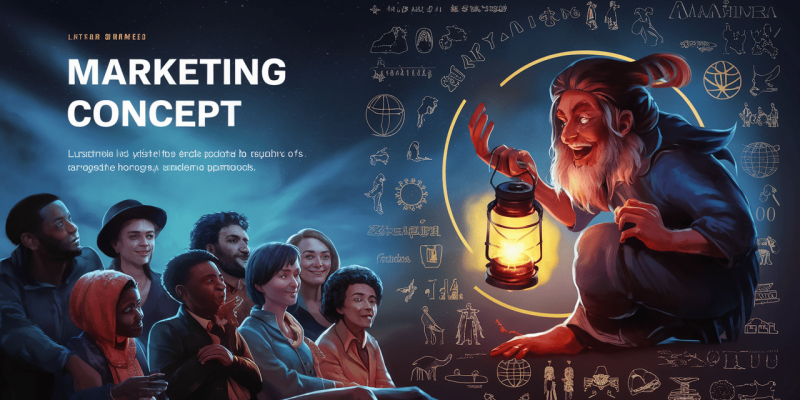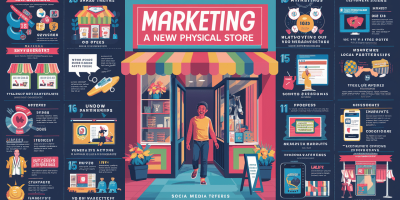Once upon a time in the bustling world of marketing, there emerged a timeless hero known as storytelling. Unlike any other strategy in its arsenal, storytelling possessed the magical power to captivate hearts and transform perceptions across the globe.
But what makes storytelling so universally potent, regardless of the audience’s language? Let’s dive into the enchanting world where narratives lead the way and discover why storytelling is your golden ticket in marketing.
The Universal Appeal of a Good Story
Stories are more than just a sequence of events; they’re a compelling way of representing experiences that resonate with everyone. From the Highlands of Scotland to the bustling streets of Shanghai, stories evoke emotional responses that transcend cultural and linguistic barriers. This universal connection is rooted in our shared human experiences. Fear, joy, surprise, sadness—these emotions are understood by all, no matter the language spoken.
Consider the classic tale of the underdog—the small start-up that makes it big or the unknown artist who becomes a global sensation. This narrative taps into the universal theme of overcoming adversity, a storyline that finds empathy and encouragement across diverse audiences. By embedding this narrative into your marketing strategy, you harness a powerful tool that speaks to a global audience.
Transcending Language with Emotive Storytelling
While storytelling is inherently powerful, the challenge often lies in translating these narratives for different linguistic landscapes without losing their essence. Here, certified translation services play a crucial role. They ensure that the emotional punch and cultural nuances of your story resonate as strongly in one language as they do in another. If you’re looking for a trusted provider of certified translations, Rosetta Translation is on hand to help.
For example, if a British brand wants to reach a Japanese audience, the humour and idioms used will need to be adapted, not just translated. What makes locals chuckle in London might be puzzling in Tokyo. Professional translators can reframe these elements to maintain the story’s charm, ensuring it strikes the right chord across cultural divides.
Building Brand Identity with Narrative
Every brand has a story. Whether it’s how your company came to be or the inspiration behind your latest product, these stories form the backbone of your brand identity. Crafting this narrative carefully not only sets you apart from competitors but also gives your audience a storyline to remember and share.
Take, for instance, a local brewery that uses traditional methods passed down through generations. Sharing this story isn’t just about showcasing the brewing process but also about connecting customers to the heritage and craftsmanship that make each sip uniquely satisfying. This narrative fosters a deeper connection with the product and can turn casual customers into loyal advocates.
Engaging Content: The Story Unfolds
Good stories are not only told—they are shown. In today’s digital age, this means creating engaging content that lets the narrative unfold in captivating ways. Videos, blogs, podcasts, and social media are just some of the channels that can bring your story to life. Visual storytelling, in particular, can make a significant impact, offering a glimpse into the world you’ve crafted around your brand.
Visuals help illustrate narratives, making them accessible to those who speak different languages. A compelling video about your craft, complete with emotional music and striking imagery, can convey your brand’s ethos more powerfully than words alone. This form of storytelling can transcend linguistic boundaries, delivering the heart of your message directly to the viewer’s emotions.
Interactive Storytelling: Inviting Audience Participation
One of the most engaging ways to tell a story is to make your audience part of it. Interactive marketing campaigns that invite participation naturally create more personalised and memorable experiences. Whether it’s a social media challenge or a collaborative project, involving your audience in the narrative makes them more invested in the outcome.
Consider a campaign that asks customers to share their own stories related to your product or service. Not only does this provide authentic content that can be shared across your platforms, but it also strengthens the community around your brand. Each shared story builds on the larger narrative, creating a tapestry of experiences that highlight the impact of your brand on real lives.
The Never-Ending Story
In the grand saga of marketing, storytelling is the chapter that never ends. It continuously evolves with each interaction, feedback, and social media share. By prioritising storytelling in your marketing efforts, you create more than just a brand; you build a living narrative that grows and breathes with your audience.
So, as you pen the next chapter of your marketing strategy, remember the power of storytelling. It’s more than just a tool; it’s a bridge that connects diverse cultures, emotions, and languages in the marketplace of ideas. Your story is your brand’s unique legacy—craft it well, and it will speak to hearts around the world, no matter the language they speak.
In conclusion, storytelling isn’t just about narrating events—it’s about weaving a reality that invites, engages, and resonates universally. Embrace it, and watch your brand story not just told, but truly heard and felt across the globe. After all, in the world of marketing, every brand is a story waiting to be told.














Comments